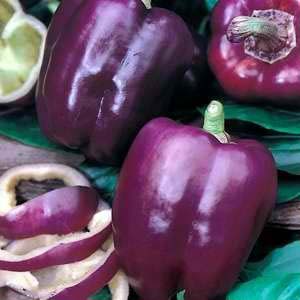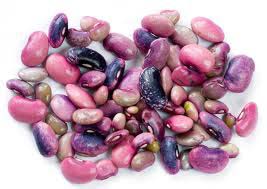For a long time, dietitians have advised to eat a colorful diet. Many yellow and orange plants are rich in Vitamin C and Betacarotene, Green plants are rich in Iron, Calcium and Folic Acid, and Red plants add Lycopene and other important nutrients to your body. Filling your plate with an array of colors creates a balanced diet. It is no surprise that recently people have been following the “color diet” fad. However, one color that is only starting to gain recognition is purple. Purple plants contain a pigment called anthocyanin (the same antioxidant found in red wine.) Antioxidants are good for the body, because they protect human cells from oxidation (which causes disease.) So you may now be asking ‘how do I include purple in my diet?’; Thankfully, a new fad in the gardening world is bringing purple into a new spotlight. Don’t worry- these plants aren’t genetically engineered to be this crazy color, they are actually heirlooms and hybrids. Here is a list of some purple plants that you can grow in your garden this upcoming season to create a well rounded (and colorful) diet!

Depurple Hybrid Cauliflower – Recently, cauliflower has been everywhere. It is the superstar for gluten-free and low-carb dieters. It can be substituted for many foods that we love to eat. It is being turned into rice, mashed potatoes, pizza crust and even hot wings! Unlike it’s smelly white counter-part, Depurple cauliflower has a buttery-sweet flavor with lavender-blue florets. It can be started indoors and transferred out into full sun in the Spring.

Purple Dragon Carrot – Parents everywhere have been giving the party line of ‘If you eat your carrots, your eye-sight will get better’ to coax their children into eating vegetables. But why not just give them a funky colored one instead? Did you know that before the 17th century, all carrots were either purple, white or yellow? These purple carrots have the same taste as their orange counterparts. After the danger of frost has passed, you can directly sow the carrots seeds in deep well-cultivated soil.
 Molokai Purple Sweet Potato – This sweet potato is commonly found in Hawaii and is similar to the Filipino purple yam ‘Ube.’ Ube has recently been a trend because it has been used to create desserts from this starchy vegetable. Ice cream being one of the popular desserts. Molokai is much higher in antioxidants than normal orange sweet potatoes. The flesh is sweet and creamy, and has overtones of chestnuts. It can be grown in well-drained soil in a sunny spot.
Molokai Purple Sweet Potato – This sweet potato is commonly found in Hawaii and is similar to the Filipino purple yam ‘Ube.’ Ube has recently been a trend because it has been used to create desserts from this starchy vegetable. Ice cream being one of the popular desserts. Molokai is much higher in antioxidants than normal orange sweet potatoes. The flesh is sweet and creamy, and has overtones of chestnuts. It can be grown in well-drained soil in a sunny spot.

Purple Beauty Pepper – The purple beauty pepper, are a mild flavored bell pepper. They are heat-tolerant and can be grown in full sun.

Red Fire Broccoli – Red fire broccoli is a mini-broccoli plant. It creates 6 to 8-inch bright purple florets. This is another great way to make eating vegetables fun for kids! They have the same taste as their green cousins. Plant in well-draining soil.

Scarlet Runner Bean – This purple bean plant is not only edible, but ornamental! It creates long fire-red edible flowers, and follows up with bright pink beans that mature into lavender. Plant in part sun, let the vining commence.

Indigo Rose Tomato – These tomatoes grow to be 2-inch rounds. The fruit exposed to the sun turn a blueish-plum color, while the shaded portions turn dark red. Sow the seeds indoors and set outside after the danger of frost has passed. Grow in an area with at least 6 to 8 hours of direct sunlight daily.
Thank you to Jessica Damiano for the original information. You can read more here.


